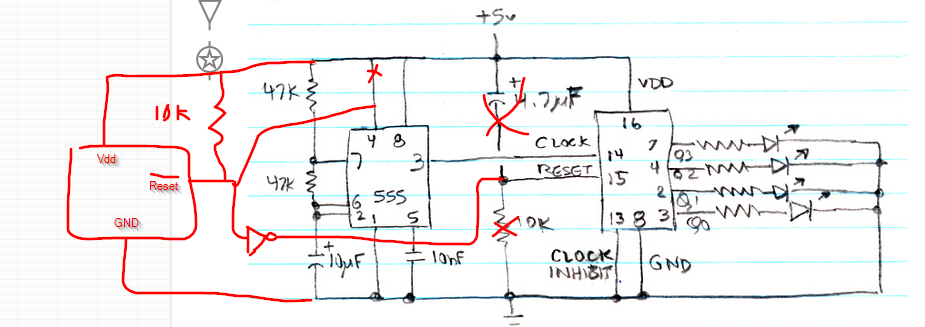In the circuit below, a 555 timer produces approximately 1 pulse per second, and the CD4017 counts pulses. The initial state of a CD4017 is undefined, thus I need a reset pulse on power up. In the circuit, that is a 4.7uF capacitor between Vdd and the Reset pin, and a 10k resistor from the Reset pin to ground.
 As I understand it, when the power is first applied, the capacitor has no charge.
Until charged, it has effectively zero resistance, causing the Reset pin to go HI. Then it charges, giving it high resistance, and the 10k resistor pulls the Reset pin LO.
As I understand it, when the power is first applied, the capacitor has no charge.
Until charged, it has effectively zero resistance, causing the Reset pin to go HI. Then it charges, giving it high resistance, and the 10k resistor pulls the Reset pin LO.
That's the theory, anyway, according to various circuits I have studied around on other sites. Since it is used a lot, I assumed it was a standard technique.
But what I see in practice is:
- Turning on the power when the circuit and power supply has been turned off for awhile causes the Q0 LED to light briefly, then it quickly jumps to Q1.
- If the power has been on, then I quickly turn it off then back on, the Q0 LED lights for a full second, then Q1 lights, the way I want it to always work.
Confession: the indicator LEDs are not actually as I have drawn them above. I prototyped this circuit on a PAD-234A, which has eight buffered LEDs, and I just used those. One buffered LED circuit (from the PAD-234A schematic) is as follows:

Any ideas on why I see this behavior? Is there a better power-on reset for a CD4017?


